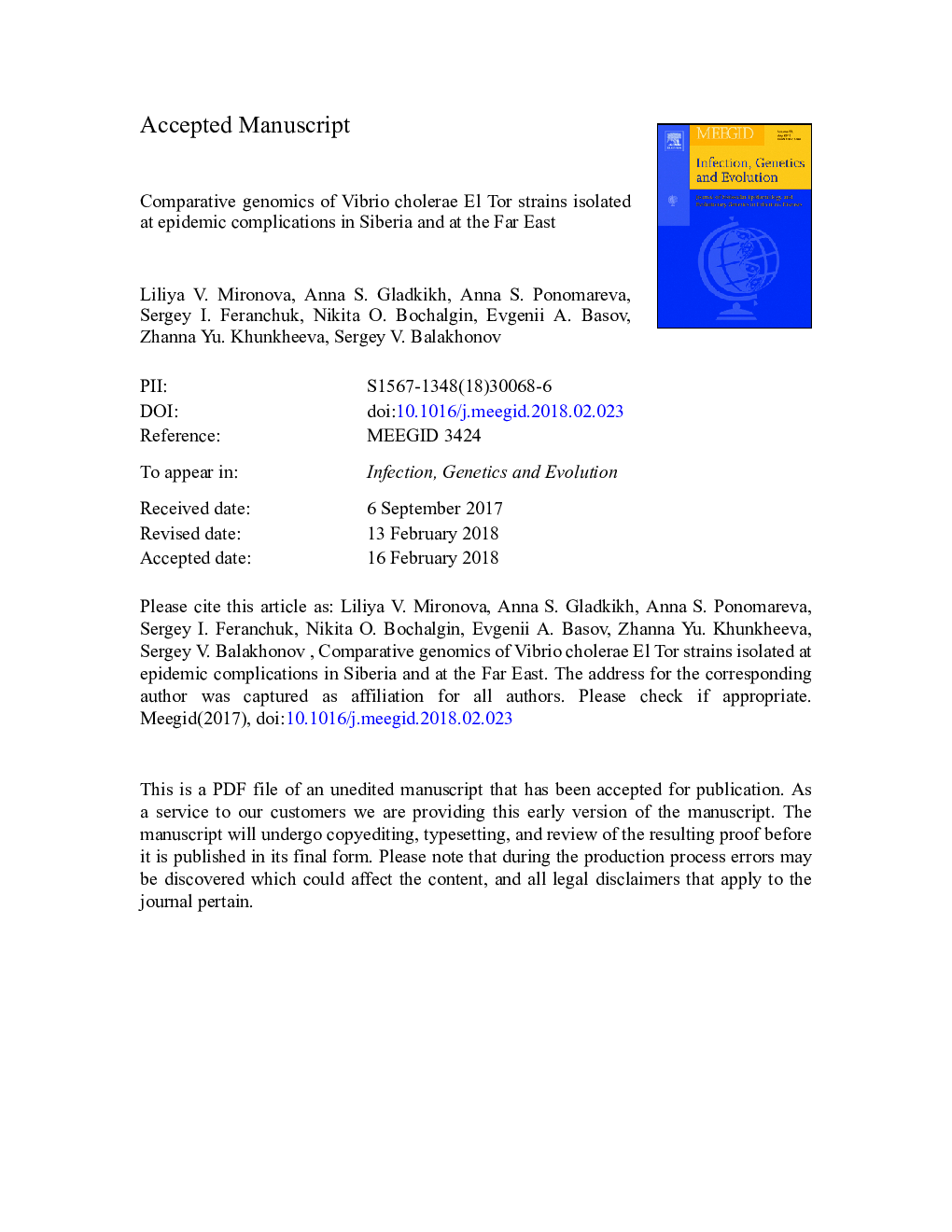| Article ID | Journal | Published Year | Pages | File Type |
|---|---|---|---|---|
| 8646878 | Infection, Genetics and Evolution | 2018 | 26 Pages |
Abstract
The territory of Siberia and the Far East of Russia is classified as epidemically safe for cholera; however, in the 1970s and 1990s a number of infection importation cases and acute outbreaks associated with the cholera importation were reported. Here, we analyze genomes of four Vibrio cholerae El Tor strains isolated from humans during epidemic complications (imported cases, an outbreak) in the 1990s. The analyzed strains harbor the classical allele of the cholera toxin subunit B gene (ctxB1); thus, belong to genetically altered variants of the El Tor biotype. Analysis of the genomes revealed their high homology with the V. cholerae N16961 reference strain: 85-93 SNPs were identified in the core genome as compared to the reference. The determined features of SNPs in the CTX prophage made it possible to propose the presence of a new subtype - CTX-2a in two strains; the other two strains carried the prophage of CTX-3 type. Results of phylogenetic analysis based on SNP-typing demonstrated that two strains belonged to the second wave, and two - to the early third wave of cholera dissemination in the world. Phylogenetic reconstruction in combination with epidemiological data permitted to trace the origin of the strains and the way of their importation to the Russian Federation directly or through temporary cholera foci.
Keywords
Related Topics
Life Sciences
Agricultural and Biological Sciences
Ecology, Evolution, Behavior and Systematics
Authors
Liliya V. Mironova, Anna S. Gladkikh, Anna S. Ponomareva, Sergey I. Feranchuk, Nikita Ð. Bochalgin, Evgenii A. Basov, Zhanna Yu. Khunkheeva, Sergey V. Balakhonov,
